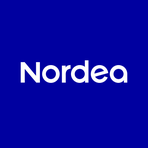Nordea Bank's Strategic Share Buyback: A Financial Dance
March 13, 2025, 4:38 am
Nordea Bank Abp is making waves in the financial waters with its recent share buyback program. This move is not just a simple transaction; it’s a calculated strategy aimed at enhancing shareholder value and optimizing capital. The bank has been actively repurchasing its own shares, signaling confidence in its financial health and future prospects.
On March 6, 2025, Nordea announced a robust buyback program, authorizing up to €250 million. This decision came after the bank's Annual General Meeting in 2024, where shareholders gave the green light. The buyback is a strategic play, designed to bolster the stock price and return value to investors. It’s like a chef seasoning a dish—adding just the right amount to enhance the flavor.
The execution of this program began in earnest on March 10 and 11, 2025. On March 10, Nordea repurchased 412,908 shares at an average price of €13.16, totaling approximately €5.43 million. The following day, the bank upped the ante, buying back 417,810 shares at an average price of €13.00, bringing the total cost to around €5.43 million again. These figures are not just numbers; they reflect a strategic maneuver in a competitive market.
Why does this matter? Share buybacks are often seen as a sign of strength. They indicate that a company believes its stock is undervalued. By reducing the number of shares in circulation, each remaining share represents a larger piece of the pie. This can lead to an increase in earnings per share (EPS), a key metric that investors watch closely. It’s akin to a sculptor chiseling away excess stone to reveal a masterpiece beneath.
Nordea’s buyback is executed in compliance with European regulations, specifically Regulation No. 596/2014 and the Commission Delegated Regulation (EU) 2016/1052. This adherence to regulatory frameworks ensures transparency and fairness in the market. Investors can rest easy knowing that Nordea is playing by the rules, making this financial dance both elegant and responsible.
As of the latest transactions, Nordea holds a total of 830,718 treasury shares for capital optimization and a staggering 11,513,966 shares for remuneration purposes. This dual approach serves two masters: it supports the bank’s capital structure while also providing a pool of shares for employee compensation. It’s a balancing act, ensuring that the bank remains agile and competitive.
The financial landscape is ever-changing. Economic conditions, interest rates, and market sentiment can shift like the wind. In such an environment, companies must be nimble. Nordea’s buyback program is a strategic response to these dynamics. It’s a way to reassure investors that the bank is committed to maintaining a strong balance sheet and delivering value.
Investors are keenly watching how this buyback will impact Nordea’s stock price. Historically, share repurchases can lead to a positive reaction in the market. When a company buys back its shares, it sends a message: “We believe in our future.” This can attract new investors and bolster existing ones. It’s a signal that the bank is not just surviving but thriving.
Moreover, Nordea’s decision to engage in a buyback program reflects broader trends in the banking sector. Many financial institutions are adopting similar strategies to enhance shareholder returns. In a world where dividends alone may not suffice, buybacks offer an alternative route to reward investors. It’s a modern twist on an age-old practice.
However, not all analysts are convinced that buybacks are the best use of capital. Some argue that funds could be better allocated toward growth initiatives, such as technology investments or expanding services. Critics suggest that while buybacks can boost stock prices in the short term, they may not contribute to long-term growth. It’s a debate that continues to unfold in boardrooms and analyst reports alike.
In conclusion, Nordea Bank’s share buyback program is a strategic move in a complex financial landscape. It reflects confidence in the bank’s future and a commitment to enhancing shareholder value. As the financial world watches closely, the impact of these transactions will unfold over time. Will the buybacks lead to a surge in stock prices? Only time will tell. For now, Nordea is dancing to its own rhythm, navigating the intricate steps of the financial ballet with poise and purpose.
On March 6, 2025, Nordea announced a robust buyback program, authorizing up to €250 million. This decision came after the bank's Annual General Meeting in 2024, where shareholders gave the green light. The buyback is a strategic play, designed to bolster the stock price and return value to investors. It’s like a chef seasoning a dish—adding just the right amount to enhance the flavor.
The execution of this program began in earnest on March 10 and 11, 2025. On March 10, Nordea repurchased 412,908 shares at an average price of €13.16, totaling approximately €5.43 million. The following day, the bank upped the ante, buying back 417,810 shares at an average price of €13.00, bringing the total cost to around €5.43 million again. These figures are not just numbers; they reflect a strategic maneuver in a competitive market.
Why does this matter? Share buybacks are often seen as a sign of strength. They indicate that a company believes its stock is undervalued. By reducing the number of shares in circulation, each remaining share represents a larger piece of the pie. This can lead to an increase in earnings per share (EPS), a key metric that investors watch closely. It’s akin to a sculptor chiseling away excess stone to reveal a masterpiece beneath.
Nordea’s buyback is executed in compliance with European regulations, specifically Regulation No. 596/2014 and the Commission Delegated Regulation (EU) 2016/1052. This adherence to regulatory frameworks ensures transparency and fairness in the market. Investors can rest easy knowing that Nordea is playing by the rules, making this financial dance both elegant and responsible.
As of the latest transactions, Nordea holds a total of 830,718 treasury shares for capital optimization and a staggering 11,513,966 shares for remuneration purposes. This dual approach serves two masters: it supports the bank’s capital structure while also providing a pool of shares for employee compensation. It’s a balancing act, ensuring that the bank remains agile and competitive.
The financial landscape is ever-changing. Economic conditions, interest rates, and market sentiment can shift like the wind. In such an environment, companies must be nimble. Nordea’s buyback program is a strategic response to these dynamics. It’s a way to reassure investors that the bank is committed to maintaining a strong balance sheet and delivering value.
Investors are keenly watching how this buyback will impact Nordea’s stock price. Historically, share repurchases can lead to a positive reaction in the market. When a company buys back its shares, it sends a message: “We believe in our future.” This can attract new investors and bolster existing ones. It’s a signal that the bank is not just surviving but thriving.
Moreover, Nordea’s decision to engage in a buyback program reflects broader trends in the banking sector. Many financial institutions are adopting similar strategies to enhance shareholder returns. In a world where dividends alone may not suffice, buybacks offer an alternative route to reward investors. It’s a modern twist on an age-old practice.
However, not all analysts are convinced that buybacks are the best use of capital. Some argue that funds could be better allocated toward growth initiatives, such as technology investments or expanding services. Critics suggest that while buybacks can boost stock prices in the short term, they may not contribute to long-term growth. It’s a debate that continues to unfold in boardrooms and analyst reports alike.
In conclusion, Nordea Bank’s share buyback program is a strategic move in a complex financial landscape. It reflects confidence in the bank’s future and a commitment to enhancing shareholder value. As the financial world watches closely, the impact of these transactions will unfold over time. Will the buybacks lead to a surge in stock prices? Only time will tell. For now, Nordea is dancing to its own rhythm, navigating the intricate steps of the financial ballet with poise and purpose.

